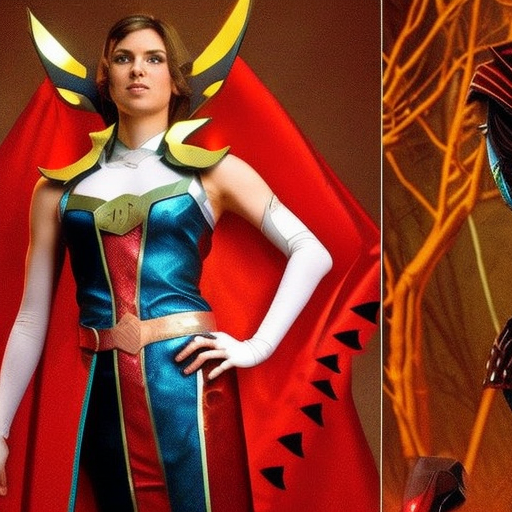Summary:
Costume design is a crucial aspect of theater, film, and television production that involves creating and selecting clothing and accessories to help bring characters to life. It contributes to the overall visual aesthetic and storytelling of a production, helping to establish the time period, social status, personality, and relationships of the characters. Costume designers work closely with directors, actors, and other members of the production team to ensure that the costumes align with the vision and objectives of the project. They research, sketch, source, and create costumes, considering factors such as historical accuracy, character development, practicality, and budget constraints.
Overview:
Costume design is an integral part of the creative process in theater, film, and television. It involves the design, creation, and selection of clothing and accessories for characters to wear during a production. The costumes help to visually convey the time period, social status, personality, and relationships of the characters, enhancing the storytelling and overall visual aesthetic.
Role of a Costume Designer:
The costume designer is responsible for translating the director’s vision and the script’s requirements into tangible costumes. They collaborate closely with the director, production designer, and other members of the creative team to ensure that the costumes align with the overall artistic concept. The costume designer conducts extensive research to understand the historical context, cultural influences, and social dynamics of the characters and the setting. This research helps them create costumes that are accurate, authentic, and visually compelling.
The Design Process:
The costume design process typically begins with reading the script and meeting with the director to discuss their vision for the production. The costume designer then conducts research, gathering visual references, historical documents, and other relevant materials. They create sketches and mood boards to communicate their ideas and collaborate with the director and other team members. Once the designs are approved, the costume designer begins sourcing or creating the costumes. They may work with a team of costume makers, tailors, and craftspeople to bring their designs to life. Throughout the process, the costume designer considers practicality, budget constraints, and the needs of the actors.
Collaboration and Communication:
Costume designers work closely with the director, actors, and other members of the production team to ensure that the costumes enhance the storytelling and support the character development. They collaborate with the actors to understand their physical and emotional needs, ensuring that the costumes are comfortable and allow for movement. The costume designer also communicates with the hair and makeup team to ensure a cohesive overall look. Additionally, they collaborate with the lighting and set designers to ensure that the costumes are visually harmonious with the overall production design.
Historical Accuracy and Authenticity:
In productions set in specific historical periods, costume designers strive to achieve accuracy and authenticity. They research the fashion trends, fabrics, and construction techniques of the time to create costumes that are true to the period. However, they may also make creative choices to enhance the visual impact or to convey specific character traits.
Costume Design in Different Mediums:
While the principles of costume design remain consistent across theater, film, and television, there are some differences in the approach. In theater, costumes need to be durable and practical for live performances, whereas in film and television, costumes may be subject to different lighting conditions and camera angles. Additionally, in theater, costumes need to be visible from a distance, while in film and television, close-ups may require more intricate details.
Conclusion:
Costume design is a crucial element of theater, film, and television production. It involves creating and selecting costumes that help bring characters to life, enhance storytelling, and contribute to the overall visual aesthetic. Costume designers collaborate closely with directors, actors, and other members of the production team to ensure that the costumes align with the vision and objectives of the project. Through research, sketching, sourcing, and creating, costume designers bring their artistic vision to reality, helping to create memorable and impactful characters.












